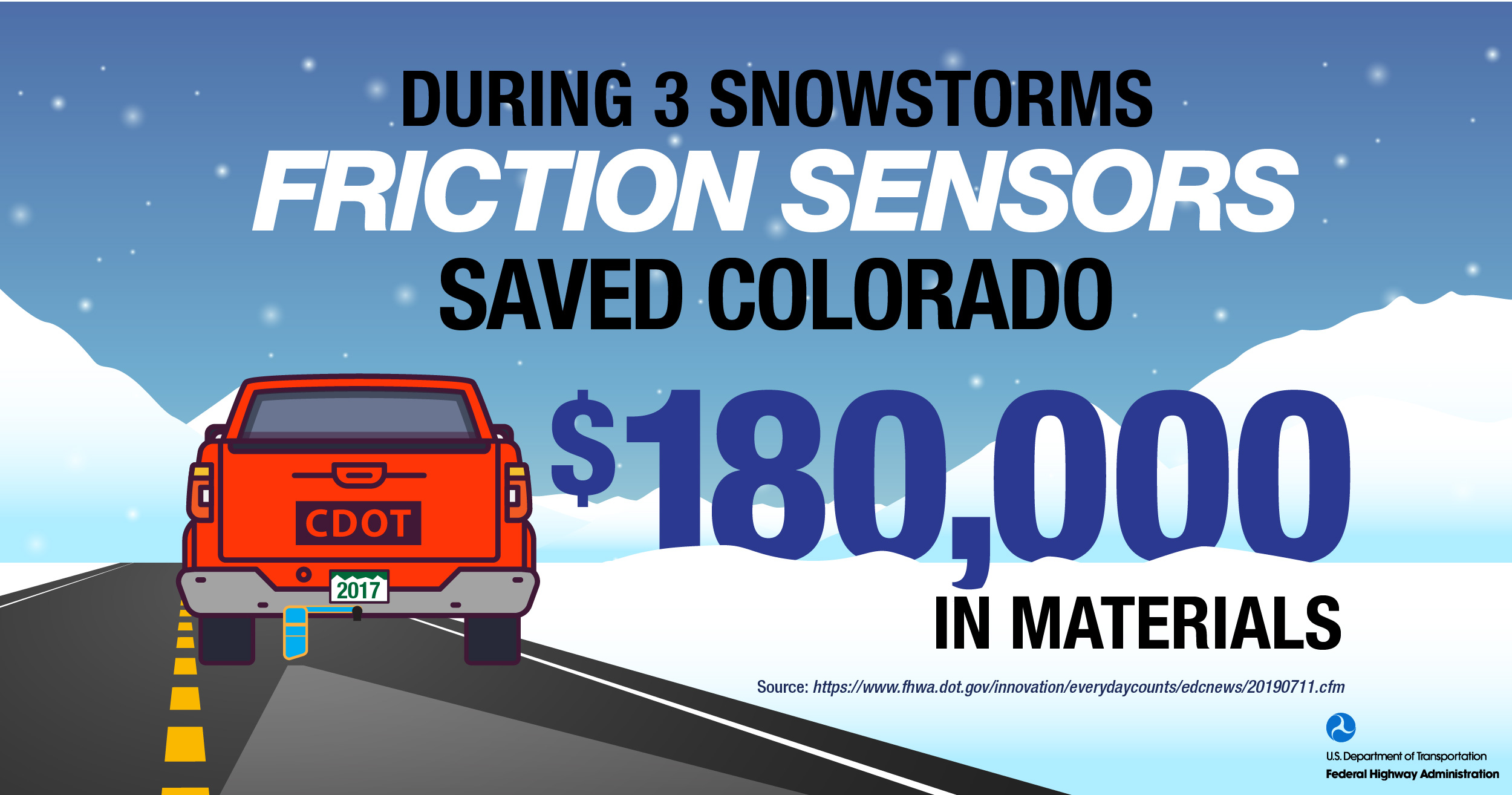The Colorado Department of Transportation (CDOT) uses friction sensors—electronic radars attached to the back of fleet vehicles—to collect data on the amount of grip present on a roadway, increasing road safety and lowering costs. The sensors relay information on pavement temperature changes, friction, and moisture levels on a road to the maintenance decision support system, a computer-based tool that provides maintenance staff with route-specific weather information and treatment recommendations. Using the system enables maintenance workers to focus on areas that need treatment rather than larger roadway sections. In testing the friction sensors on a small selection of roads, CDOT reduced use of solid materials by 21 percent and liquid materials by 56 percent during three snowstorms, saving $180,000 in material costs. CDOT estimates the sensors will save more than $1 million a year with statewide implementation.

A transportation reinvestment zone (TRZ) is a value capture technique that designates areas around transportation projects to encourage development and capture property tax increments to help fund the improvements. TRZs do not raise tax rates; instead, they leverage new property tax revenues generated within the TRZ. The city of El Paso, TX, first used TRZs for its Americas Interchange project. The TRZs covered $30 million in funding for the project, constructed in three phases completed in 2013 to 2016. TRZs now serve as a key funding mechanism to implement El Paso’s Comprehensive Mobility Plan. Revenue generated in these zones helped finance several projects in addition to the interchange, and the city anticipates that the TRZs ultimately will generate $70 million for projects in the mobility plan.
- Cover
- Public Involvement Communication Tools for a 21st Century Audience
- Unmanned Aerial Systems Take Flight in Highway Transportation
- Innovation Synergy: UAS Videos Enhance Virtual Public Involvement Techniques
- The Pathway to Innovation
- Safety Awards Highlight Every Day Counts Innovations
- States Innovate
- EDC Outtakes: Weather Responsive Management Strategies
- About Innovator
